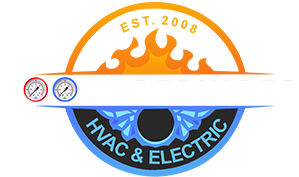Boost Services Heating and Cooling Pasadena
Factors To Consider Before Buying HVAC Equipment Online
Is buying HVAC equipment online the right decision?
Buying HVAC Equipment Online that more products are available on the Internet as it has developed over the last two decades. It is not surprising that the volume of online sales increases each year. It is very simple, convenient and time-saving. If one is busy, to search and compare the shops and to order a product of all kinds from your computer or phone. And, why not? After doing some research and identifying the right brand and model of the coffee maker and the best price the ‘buy now’ button will make that cup of coffee maker arrive on your doorstep. the day after tomorrow. However, there are a few things for your home where clicking that ‘buy now’ button could be recurrent, and cost you a lot in the future.
Buying a product such as a furnace or a central air conditioner. Unlike a coffee pot or any other device that you can just plug into the wall and use. Buying a product such as that straight off the internet is a case where what you don’t know has a real potential to bite you in the end. It is not the same as getting a year or two of use out of a $40 coffee pot—heating and cooling equipment is a much larger investment to put at risk.
Critical factors that will directly affect performance, equipment life-expectancy, and the actual cost of running your new system can make buying your furnace or air conditioning equipment without on-site input from a professional, a very frustrating experience. There are serious reasons that heating and cooling equipment has traditionally not been sold directly to consumers not intimately familiar with the service and installation of the equipment—and these concerns have not changed.
Do you really save by buying online?
As is the case in any direct retailing, those consumers planning to purchase online have to reckon with what their perceived cost of doing so really entails. Toward that end, the following is a discussion of the concerns of buying HVAC equipment online yourself—before the contractor who will install it ever sets foot in your home.
Of course, the benefit of buying your heating and cooling directly is typically perceived—if not overtly presented—as a way to save time and money by cutting out the middleman. That is highly appealing and an easy concept for the consumers to wish to purchase into. Still, new equipment is an expensive affair and, therefore, getting quotes is a time-consuming process. But the ‘save time & save money’ plan is a better strategy for coffee makers—not your more complex heating and cooling equipment for several important reasons.

What do I need to know about having the HVAC equipment I’m thinking of purchasing online installed?
Again, regardless of the brand of the equipment, a heating and cooling system’s performance is highly dependent on the installation quality. Ask any manufacturer today and they will inform you that their equipment can only perform to the level of efficiency put on the bill-draw (even if properly sized) depending on the quality of the installation. This means the comfort and efficiency a system delivers depends on the knowledge and craftsmanship of the installer as much as it does on the equipment. When heating or cooling equipment is installed wrong, or adapted to poor ductwork, you can lose up to 20% of its designed efficiency. Heating and cooling equipment Installation is not a one-size-fits-all proposition, and in all practicality, is quite hard to price that way sight unseen.
No matter what a website selling equipment may say, to do your job right and guarantee your comfort and satisfaction, it is pretty much impossible to effectively pre-price an installation invisible because every house and system is different. Unless your home is like every other home a contractor services, attempting universal installation pricing will inevitably lead either to you as the homeowner being overcharged to ensure the installer makes enough to cover the ‘unknowns’ of the job, or the installer being underpaid and being forced to cut corners which may be needed to do the best job possible. For the buyer, in any way you would agree that it is as well a raw deal.
If getting a good installation makes all the difference in how a system delivers (e.g., actual realized comfort, fuel bills and the life of the system), it makes little sense to buy high-efficiency equipment and then to skimp on its installation. Installation done right requires time, skill and the right materials, all of which factor into cost.

